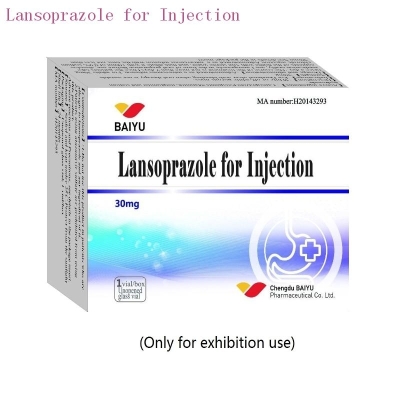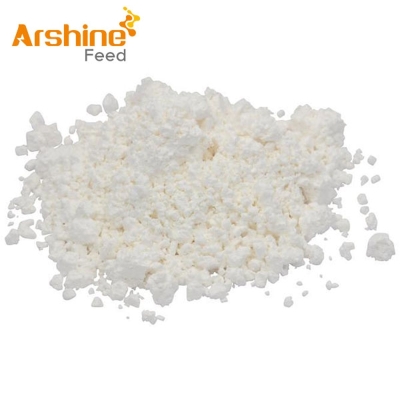-
Categories
-
Pharmaceutical Intermediates
-
Active Pharmaceutical Ingredients
-
Food Additives
- Industrial Coatings
- Agrochemicals
- Dyes and Pigments
- Surfactant
- Flavors and Fragrances
- Chemical Reagents
- Catalyst and Auxiliary
- Natural Products
- Inorganic Chemistry
-
Organic Chemistry
-
Biochemical Engineering
- Analytical Chemistry
- Cosmetic Ingredient
-
Pharmaceutical Intermediates
Promotion
ECHEMI Mall
Wholesale
Weekly Price
Exhibition
News
-
Trade Service
Introduction Acute pancreatitis refers to acute abdomen caused by abnormal activation of pancreatic enzymes to the pancreas itself and surrounding organs, which is mainly characterized by local inflammatory reaction of the pancreas, and can even lead to organ dysfunction
.
In 2014, the "Guidelines for the diagnosis and treatment of acute pancreatitis (2014)" were released
.
In the past 7 years, there have been significant changes in the diagnosis and treatment concepts, methods, and strategies of acute pancreatitis.
In order to provide evidence for the clinical diagnosis and treatment practice of acute pancreatitis in China, and promote its integration with international standards
.
1.
Diagnosis of acute pancreatitis 1.
Recommendation 1 for the diagnostic criteria of acute pancreatitis: The diagnosis of acute pancreatitis can be made by meeting two of the three characteristics of clinical symptoms, laboratory examinations and imaging examinations
.
(Level of Evidence: High; Strength of Recommendation: Strong) *The diagnostic criteria for acute pancreatitis include the following 3 items: (1) Persistent pain in the upper abdomen
.
(2) Serum amylase and (or) lipase concentrations are at least 3 times higher than the upper limit of normal
.
(3) The results of abdominal imaging examination showed imaging changes consistent with acute pancreatitis
.
Acute pancreatitis can be diagnosed if two of the above three criteria are met
.
2.
Recommendation 2 for imaging examination of acute pancreatitis: Contrast-enhanced CT examination is not recommended in the early stage of acute pancreatitis unless necessary for diagnosis
.
(Evidence level: moderate; strength of recommendation: strong) Recommendation 3: For patients with suspected biliary acute pancreatitis, routine ultrasonography should be performed at the time of admission or at the early stage of the disease to confirm the presence of biliary stones
.
(Evidence level: moderate; recommendation strength: strong) 3.
Severity classification of acute pancreatitis Recommendation 4: RAC classification and DBC classification (Table 1) can both be used to classify the severity of acute pancreatitis.
There was no significant difference in ICU occupancy rate and ICU length of stay
.
(Evidence level: moderate; recommendation strength: strong) Table 1 Acute pancreatitis grading diagnostic system Recommendation 5: critically ill acute pancreatitis (CAP) patients with persistent organ dysfunction and pancreatic (peripancreatic) necrotic infection, high mortality, must be given great attention
.
(Evidence level: moderate; recommendation strength: strong) 4.
Prediction of severe acute pancreatitis (SAP) Recommendation 6: There is currently no accurate SAP prediction system, and the patient's organ function should be closely monitored to be alert to the occurrence of SAP
.
(Evidence level: moderate; strength of recommendation: strong) 5.
Staging of the course of acute pancreatitis Recommendation 7: The course of acute pancreatitis can be divided into early (onset time ≤ 2 weeks) and late (onset time > 2 weeks), corresponding to The two death peaks in the course of the disease may overlap in the two stages of the disease
.
(Evidence level: moderate; recommendation strength: general) 2.
Treatment of acute pancreatitis 1.
Early treatment 1.
1 Fluid therapy for acute pancreatitis Recommendation 8: For patients diagnosed with acute pancreatitis, crystalloid solution should be used at a dose of 5-10 mL/mL.
(kg·h) for immediate fluid therapy
.
(Evidence level: moderate; recommendation strength: strong) 1.
2 Indications and timing of emergency endoscopic retrograde cholangiopancreatography (ERCP) treatment Recommendation 9: Emergency ERCP does not help to relieve the condition of biliary acute pancreatitis, and is only suitable for acute pancreatitis Patients with cholangitis and persistent bile duct obstruction
.
(Evidence level: high; recommendation strength: strong) 1.
3 Analgesic treatment of acute pancreatitis Recommendation 10: Analgesia is an important adjuvant therapy for acute pancreatitis, which may improve the prognosis of patients.
Analgesic drugs and methods should be reasonably selected according to the condition
.
(Evidence Level: Moderate; Strength of Recommendation: Fair) 1.
4 Nutritional support for acute pancreatitis Recommendation 11: Oral or enteral nutrition should be initiated as soon as possible when gastrointestinal function tolerates it
.
(Evidence level: high; strength of recommendation: strong) Recommendation 12: Enteral nutrition is better than parenteral nutrition for patients with acute pancreatitis who cannot eat orally
.
(Evidence level: high; recommendation strength: strong) 1.
5 Early treatment of hyperlipidemic acute pancreatitis Recommendation 13: Acute pancreatitis complicated with venous chylous blood or blood triglycerides >11.
3 mmol/L can diagnose hyperlipidemia Acute pancreatitis requires comprehensive treatment to rapidly reduce triglyceride levels
.
(Evidence level: moderate; strength of recommendation: strong) 1.
6 Early management of abdominal compartment syndrome (ACS) Recommendation 14: ACS is an important cause of early death in patients with acute pancreatitis.
Comprehensive measures such as material, drainage of abdominal cavity and retroperitoneal effusion can reduce intra-abdominal pressure, and early laparotomy is not recommended
.
(Evidence Grade: Moderate; Strength of Recommendation: Strong) 1.
7 Prophylactic use of antimicrobials Recommendation 15: Routine use of antimicrobials to prevent pancreatic or peripancreatic infections is not recommended
.
(Evidence level: high; recommendation strength: strong) 2.
Late treatment 2.
1 Diagnosis of infectious pancreatic necrosis (IPN) Recommendation 16: IPN should be considered in patients with acute pancreatitis who have symptoms of infection such as fever, abdominal pain, and generalized deterioration
.
(Evidence level: moderate; strength of recommendation: strong) Recommendation 17: It is recommended that patients with suspected IPN should undergo detection of inflammatory markers including procalcitonin and CT examination to assist in the diagnosis
.
Routine fine-needle aspiration aspiration is not recommended for patients with suspected IPN
.
(Evidence level: high; strength of recommendation: strong) 2.
2 Treatment of IPN Recommendation 18: IPN is a serious complication of acute pancreatitis and often requires surgery
.
The application of antibiotics and puncture and drainage can save some patients from surgery
.
Minimally invasive debridement has gradually become the mainstream method of IPN surgery, and open surgery can be used as a supplementary method after minimally invasive treatment fails
.
(Evidence level: moderate; recommendation strength: strong) 2.
3 IPN surgical strategy Recommendation 19: The treatment of IPN patients is based on the "Step-up" strategy
.
(Evidence level: high; recommendation strength: strong) * Currently, the preferred intervention strategy for IPN is "Step-up", that is, puncture and drainage are performed first, and video-assisted debridement and laparotomy are performed in sequence for patients with poor drainage effect.
.
Recommendation 20: For some strictly selected cases, surgery can be performed directly
.
(Level of Evidence: Low; Strength of Recommendation: Strong) 2.
4 Choice of Surgical and Endoscopic “Step-up” Recommendation 21: Surgical or endoscopic “Step-up” surgery has advantages
.
At this stage, surgical "step-up" is still the first choice for IPN treatment in most centers
.
(Evidence level: high; recommendation strength: strong) 2.
5 Indications and timing of percutaneous drainage (PCD) and endoscopic drainage Recommendation 22: Pancreatic or peripancreatic infection is an important indication for PCD and endoscopic drainage , can be performed early in the course of acute pancreatitis
.
(Evidence level: moderate; recommendation strength: strong) Recommendation 23: For acute pancreatitis patients with massive abdominal or retroperitoneal effusion and ACS, puncture and drainage can also be performed; the drainage tube should be removed early (<72 h) to reduce secondary infection
.
(Level of Evidence: Low; Strength of Recommendation: Fair) 2.
6 Timing of IPN Surgery Recommendation 24: The current timing of surgical intervention for IPN is 4 weeks after the onset of acute pancreatitis
.
(Evidence level: moderate; strength of recommendation: strong) 2.
7 Management of pancreatic fistula and pancreatic duct rupture syndrome (DPDS) Recommendation 25: Endoscopic treatment is the first choice for patients with DPDS
.
(Evidence level: moderate; strength of recommendation: strong) 2.
8 Management of portal vein and splenic vein thrombosis and pancreatic portal hypertension after acute pancreatitis Recommendation 26: Portal vein and splenic vein thrombosis are common after acute pancreatitis, and can manifest as left portal vein Hypertension symptoms, no anticoagulation is required
.
(Evidence level: low; recommendation strength: general) 3.
Relapse prevention and follow-up Recommendation 27: About 20% of patients with acute pancreatitis progress to recurrent acute pancreatitis (RAP), and treatment based on the cause can help prevent acute pancreatitis relapse
.
(Evidence level: moderate; strength of recommendation: strong) 3.
1 Timing of cholecystectomy for biliary pancreatitis Recommendation 28: For patients with biliary pancreatitis complicated with cholecystolithiasis, early cholecystectomy is recommended
.
(Evidence level: high; recommendation strength: strong) 3.
2 Follow-up of patients with acute pancreatitis Recommendation 29: Patients with acute pancreatitis should be followed up regularly after recovery to detect and treat long-term complications of acute pancreatitis
.
(Evidence level: weak; recommendation strength: general) The above content is excerpted from: Pancreatic Surgery Group, Chinese Medical Association Surgery Branch.
Guidelines for the diagnosis and treatment of acute pancreatitis in China (2021) [J].
Chinese Journal of Practical Surgery, 2021,41(07) :739-746.







